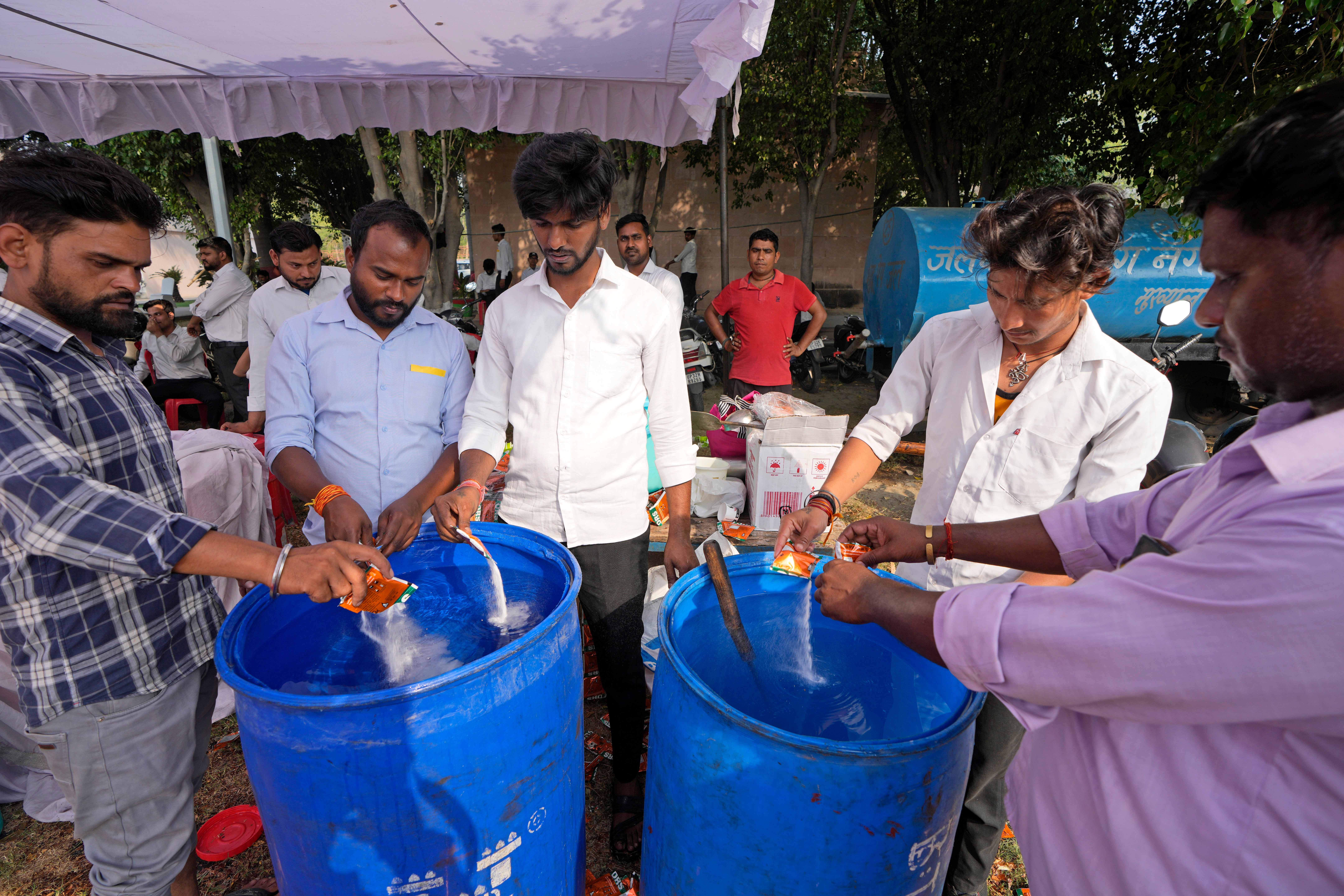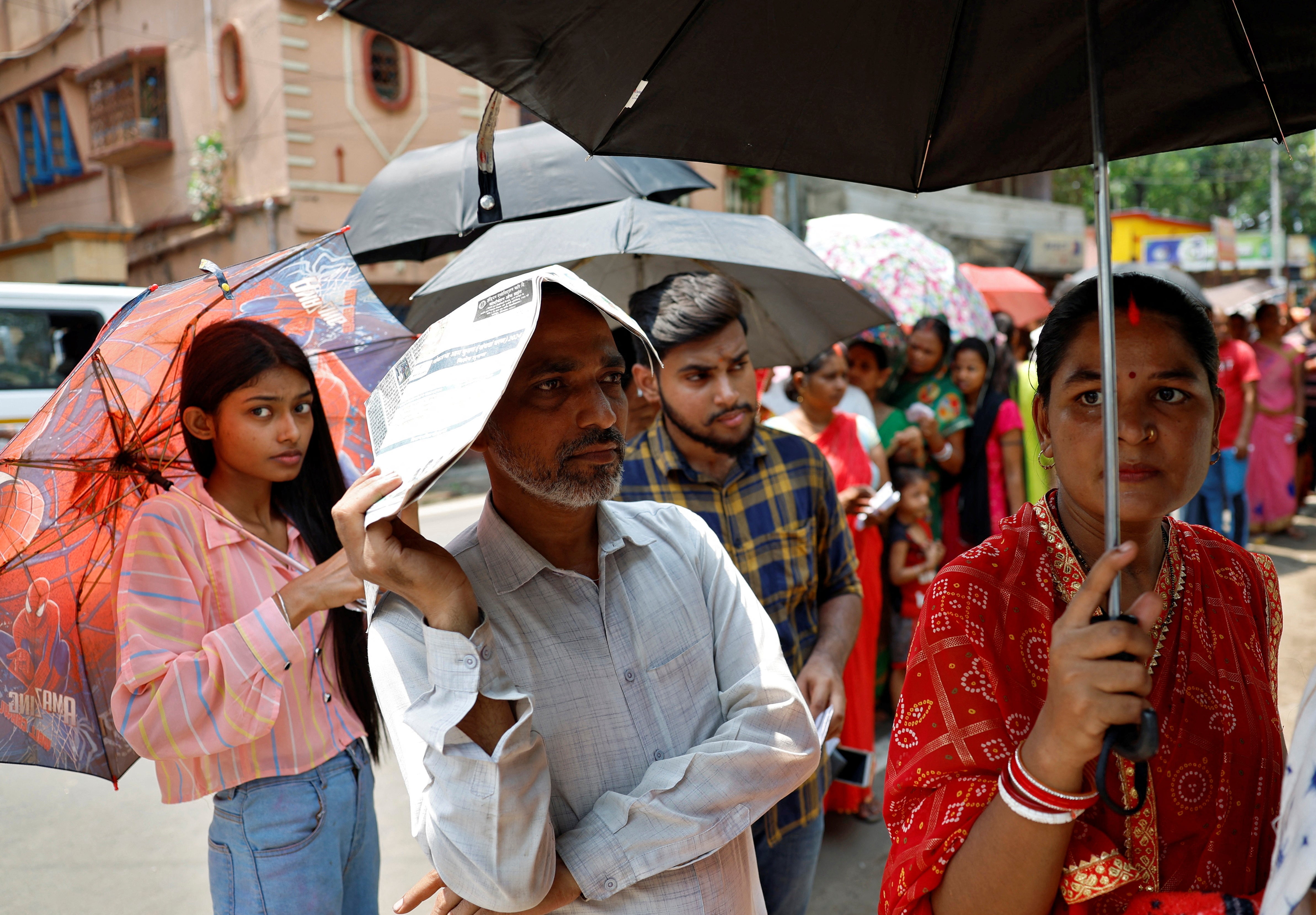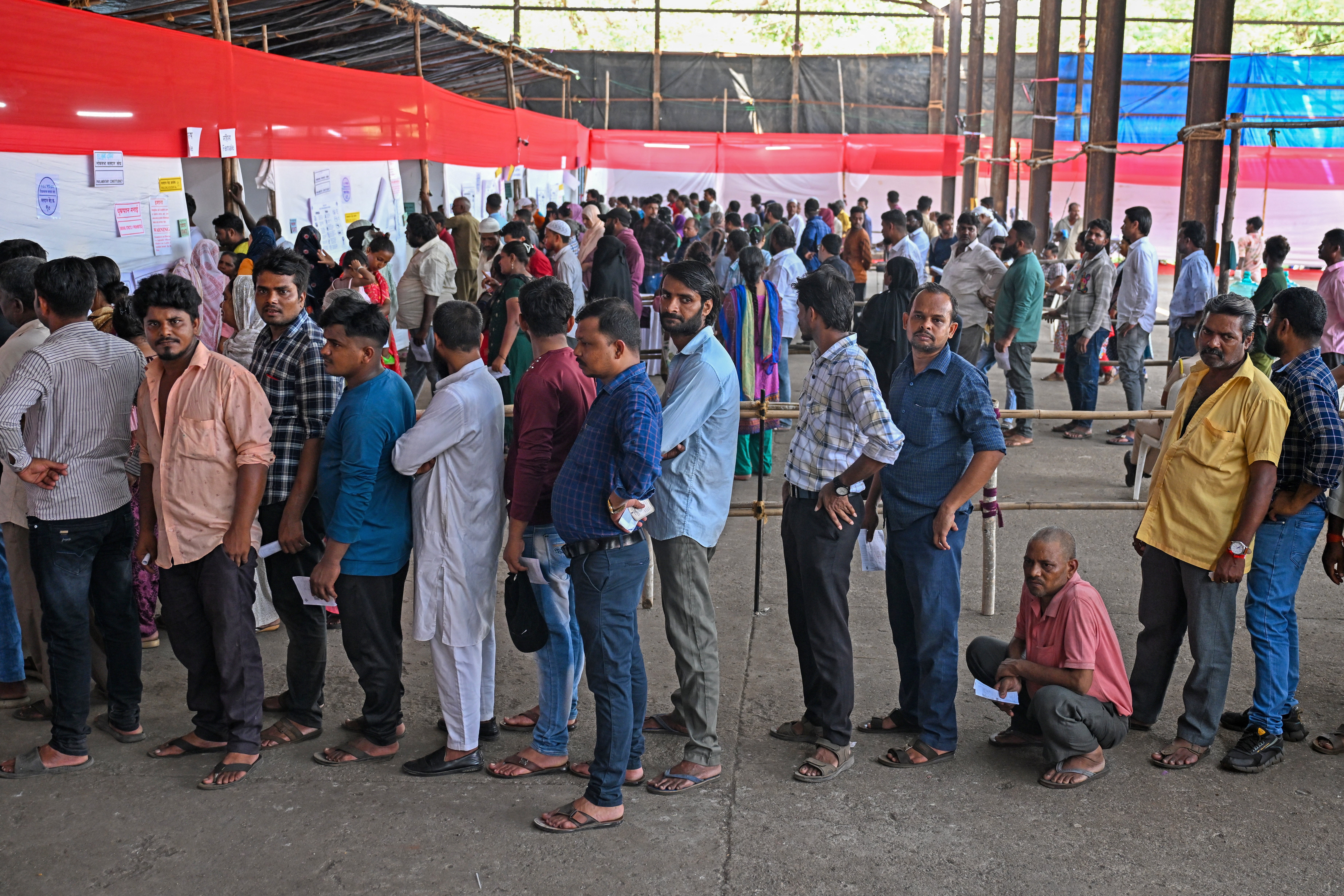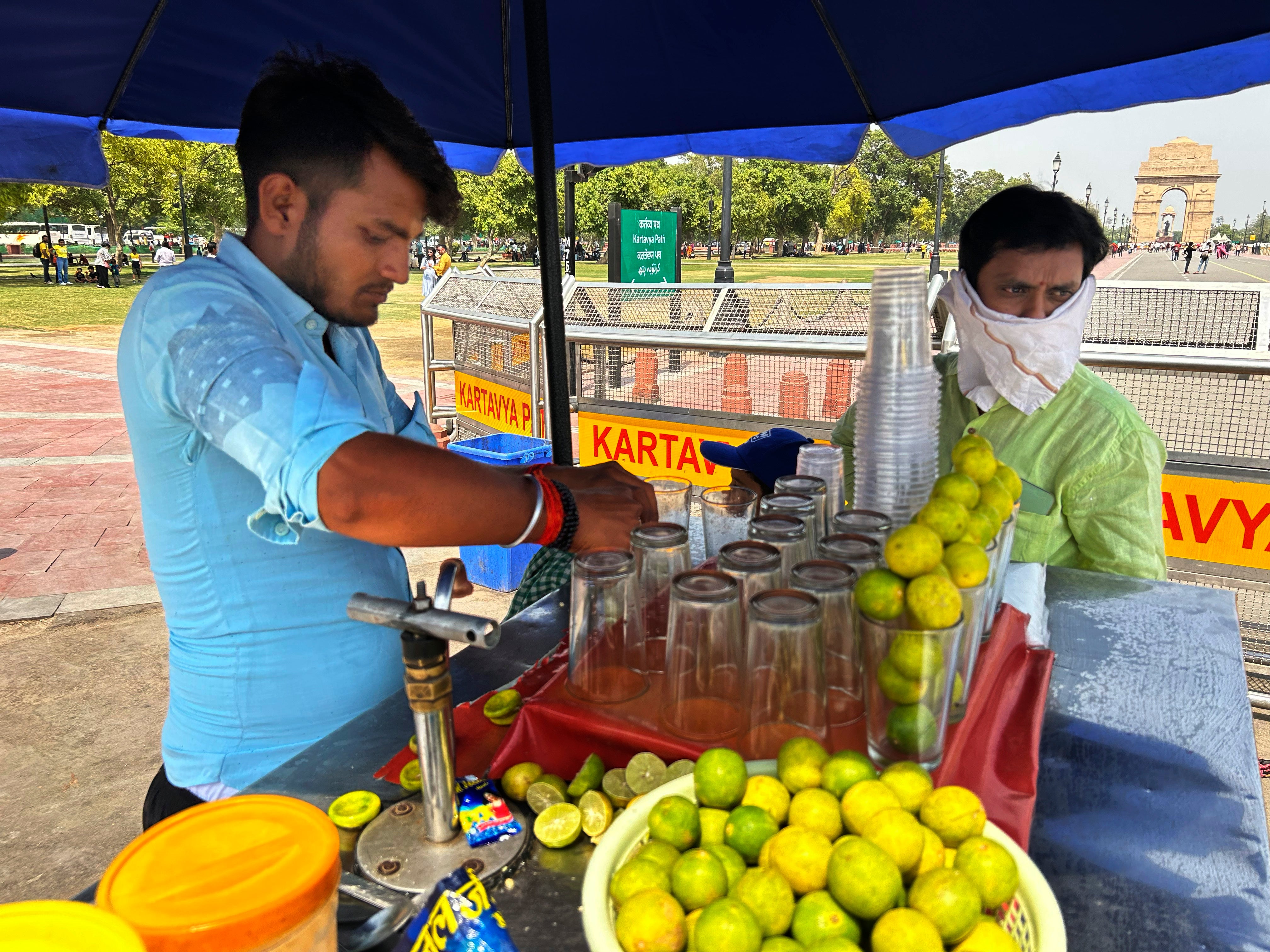India sizzles at 47C as extreme weather dampens election turnout
Millions of people across northern India under ‘red alert’ as extreme heat expected to persist throughout week
Mercury soared above 47 degrees Celsius in the capital Delhi as India continued to reel from a brutal spell of heat that is inconveniencing voters stepping out to cast their ballots in the ongoing national elections.
The city’s Najafgarh area recorded a temperature of 47.8C, the highest in the country this season, on Sunday.
In other parts of Delhi, temperatures rose to between 45 and 47C, seven degrees above normal.
An ice sculpture set up by Greenpeace India in a posh South Delhi mall to raise awareness about intensifying heat melted within hours on Sunday.
“The ice sculpture of this family melting into water in Delhi’s scorching heat is a warning bell of the escalating climate crisis, driven by the fossil fuel industry,” said Amruta SN, climate and energy campaigner, Greenpeace India.
Sunday was the third day in a row of abnormally high temperatures in the capital.
Millions of people across northern India remain under a “red alert” as extreme heat is expected to persist throughout the week.

Several regions of western India and pockets of the hilly Himalayan states also recorded abnormally high temperatures.
Rajasthan in the west saw a maximum temperature of 46C on Thursday.
In the eastern states of Odisha and West Bengal, the India Meteorological Department said the heatwave days in April were the hottest in 15 and nine years, respectively.

In this extreme weather, nearly 90 million voters were set to elect 49 of the 543 members of parliament on Monday, in the 5th phase of the seven-phase election.
The election, spread over six weeks with the results set to be declared on 4 June, will determine if Narendra Modi gets a rare third term as prime minister.
People queued up outside polling booths in several parts of the country, including the financial capital Mumbai and the heartland state of Uttar Pradesh, shielding themselves with umbrellas, cloths and newspapers.
Some arrived early to avoid the peak heat while many had to endure long waits without adequate provision of shade or cooling.

Sangeeta Rege, 46, a director at a health research organisation who voted in Mumbai told Reuters that two senior citizens collapsed at her polling station amid 33C heat and 71 per cent humidity.
“Given the hot and humid conditions, there could have been fans and better arrangements for the ill and those with disabilities,” she said.
Aadita Thackeray, a prominent political figure from opposition party Shiv Sena in western Maharashtra state, wrote on X that there were “a lot of complaints from voters about the facilities outside the booths”.
“Voters are trying to beat the heat and vote in large numbers. At least having the voter lines in shade/fans could help. They don’t want much, just basics to stay cool,” he wrote, tagging the Election Commission of India.

Nearly a billion people are eligible to vote in India’s ongoing election. But the voter turnout has been less than five years ago, with many observers blaming it on the extreme heat and criticising the election commission for not taking the weather into account when drawing up the schedule.
The average turnout of the first four phases stands at 66.95 per cent, one per cent less than in 2019.

India, like much of the rest of Asia, has been reeling from intense heat this year.
Heatwaves in the country have more than doubled in the past three decades, with 2022 alone recording over 20 events.
The meteorological department warned at the beginning of the summer that the country could see a very high number of heatwave days in 2024, breaking 2023’s record for the hottest year ever.
A study conducted by scientists from the World Weather Attribution found that this year’s heatwave would have been “virtually impossible” in the Philippines and a lot less extreme in South and West Asia without the climate crisis caused by burning oil, coal and gas.
Join our commenting forum
Join thought-provoking conversations, follow other Independent readers and see their replies
Comments
Bookmark popover
Removed from bookmarks